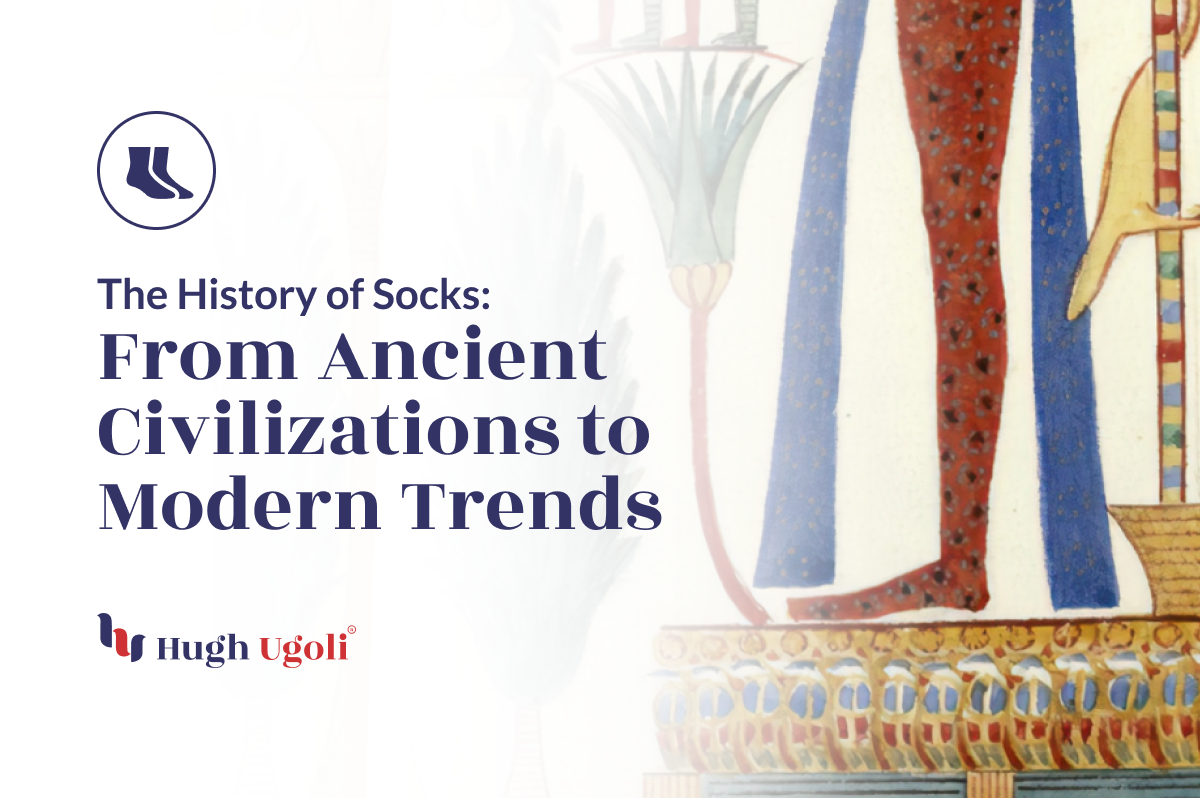Socks, far from being just a simple accessory, boast a history as complex and colorful as any garment in the tapestry of fashion. Originating in ancient civilizations, socks were once a luxury item, denoting nobility and wealth before evolving into a universal element of the modern wardrobe. This article takes you on a time-traveling adventure through the ages, exploring the evolution of socks from their earliest forms to the multifaceted fashion statements they are today. We'll uncover how socks have woven their way through history, marking social status, pioneering innovations in material and design, and reflecting the changing tides of fashion and functionality. Join us as we unravel the story of socks, revealing their significance beyond just keeping our feet warm.
The Dawn of Socks: Ancient Civilizations
Before we delve into the specifics, it's essential to understand that the concept of socks has existed for millennia. Socks have served functional and aesthetic purposes from the earliest civilizations to modern times. They have evolved from simple foot coverings to complex fashion statements, reflecting the culture and technology of their times.
The Stone Age and Ötzi the Iceman
The concept of socks can be traced back to the Stone Age when our ancestors used animal skins and pelts tied around their ankles as rudimentary socks. The oldest known example of ancient socks comes from Ötzi the Iceman, a Neolithic mummy discovered in the Alps. Ötzi wore shoes lined with a netting of bark filled with soft hay, considered the first "socks" that kept his feet warm.
The Greeks and Romans
By the 8th century BC, the Ancient Greeks had developed a type of sock called piloi, made from matted animal hair. These socks were often worn under sandals and provided insulation against the harsh terrain. On the other hand, the Romans initially wrapped their feet in strips of leather or woven fabrics. Around the 2nd century AD, the Romans began sewing these fabrics together to create fitted socks called "udones," which were designed to be worn with the Roman sandals known as "caligae."

The Middle Ages: A Symbol of Nobility
During the Middle Ages, socks became a status symbol among the European nobility. They were made from woven cloth of higher quality, often silk, and were brightly colored. The absence of elastic bands led to using garters to hold the socks in place. By the 12th century, feet were added to these long cloth coverings, transforming them into the socks we recognize today. These socks were often hand-knitted by artisans and were considered a luxury item, only affordable to the wealthy.
The Renaissance and Industrial Revolution
The 16th century saw William Lee, an English clergyman, invented the first knitting machine. Although initially rejected by Queen Elizabeth I, the machine found favor in France and led to the mass production of socks. The Industrial Revolution further democratized sock production, making it accessible to the general populace. This era also saw the introduction of cotton as a popular material for socks, providing a more affordable option for the masses.
Modern Times: The Fashion Statement
The invention of nylon in 1938 revolutionized sock manufacturing, providing both strength and elasticity. Today, socks come in many styles, patterns, and materials. From the classic argyle and stripes to quirky designs like avocados, socks have become a way to express individuality in the modern day. The fashion industry has embraced socks as an essential accessory, with designer brands offering exclusive collections that feature intricate patterns and split toes for a unique look.
From their humble beginnings as animal pelts to their current status as a fashion accessory, socks have come a long way. They are no longer just functional items but a way to make a statement, to stand out, and to add a splash of color to our lives. So, the next time you put on a hand-knitted sock with split toes, take a moment to appreciate the rich history of socks behind this everyday item. Whether you're wearing socks for comfort, style, or both, remember that you're participating in a tradition that spans thousands of years.
















